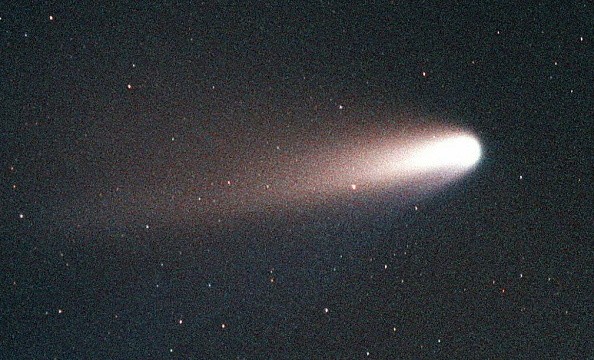A comet's volcanic eruption has been detected. This discovery was achieved by an amateur astronomer named Patrick Wiggins.

The comet 29P/Schwassmann-Wachmann (aka 29P) is among the 100 comets that have been pushed from the Kuiper Belt, a ring of icy space rocks located beyond Neptune.
NASA calls them "centaurs." Compared to other centaur comets, the volatile 29P is considered the most volcanically active one in the solar system.
Comet's Volcanic Eruption Detected
According to Live Science's latest report, Wiggins discovered 29P's volcanic outburst after the comet's brightness drastically increased.

Spaceweather.Com reported that on Nov. 22, the space rock's brightness reached more than four magnitudes, which is a major sign that there's a volcanic eruption.
Because of this, Andre Debackere, an astronomer at the Académie de Clermont-Ferrand, decided to capture the volatile comet using the Faulkes Telescope North in Hawaii.
In his photo, you can see that the comet has a Pac-Man-shaped ejecta. This means the eruption came from one part of the comet's surface.
Space experts stated that this outburst spewed out more than one million particles. However, unlike the normal volcanic eruptions on Earth, 29P spewed out cold gas and ice.
Why 29P's Volcanic Eruption is a Big Deal
Cai Stoddard-Jones, a doctoral candidate at Cardiff University in the U.K., said that the volcanic eruption of 29P is rare.
He added that explaining why the outburst is larger than other comet eruptions is difficult.
Aside from this, astronomers also believed that 29P's outburst could have spewed the potential building blocks of life into the solar system.
This outburst is also the second-largest one on 29P in the last 12 years.
If you want to learn more about this comet's volcanic eruption, you can visit this link.
In other news, the asteroid 2022 AP7 concerned some scientists because of its possible negative effects on Earth.
Recently, a skyscraper-sized asteroid was also discovered.
For more news updates about comets and asteroids, keep your tabs open here at TechTimes.
Related Article: Astronomers Discover an Asteroid 3 Hours Before Crashing into Lake Ontario, Canada
ⓒ 2025 TECHTIMES.com All rights reserved. Do not reproduce without permission.




